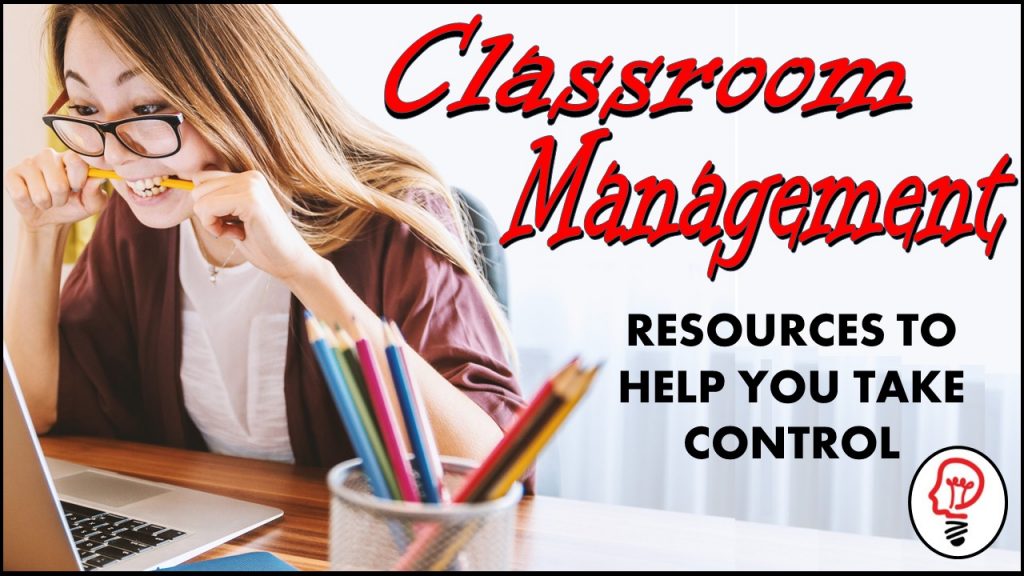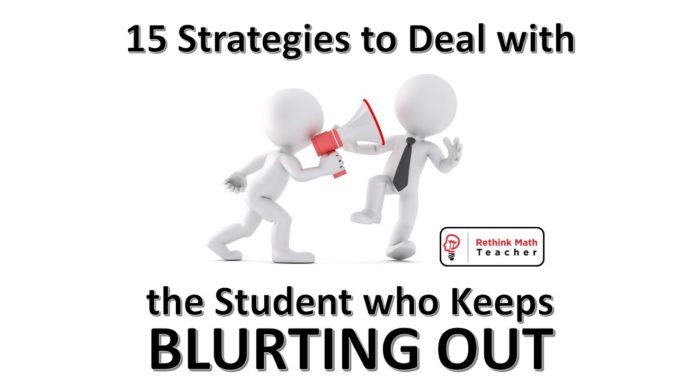
Every teacher has felt the frustration of a student who shouts out things in the middle of class, disrupting your lesson, getting students off task, and driving you bananas.
There is no one-size-fits-all solution. Each situation is different. Some strategies work well with some students, and some do not. Some teachers are better at implementing certain techniques than others.
For me, I find that mixing it up, and using many different strategies is most effective.
However, what’s important, is that the behavior is corrected, so that it doesn’t become contagious, and take over the classroom.
Below is a list of 15 strategies that teachers can and should use to help combat “The Blurter Outer.”
1) Proximity
When a student is blurting out, talking out of turn, or even misbehaving, a very easy and effective strategy is to move yourself closer to that student. Stand next to his desk, or behind him. Sometimes, of course not always, put your hand on his shoulder and continue your lesson.
I saw one teacher who would stand next to the student and continue teaching the class as if it was no big deal for her to be standing next to that student. If the student continued to misbehave, she would put her arm on his desk. If the problem persisted, the teacher would reach across his desk with her arm, forcing the student to lean back in his chair. She continued to disrupt his personal space bubble until the behavior changed, and then she reversed.
2) Praising the Ones Who are Behaving
When I talk about this strategy, people often assume I referring to elementary kids. But I have taught middle and high school at a Title 1 school for many years. This technique works on them just as well as it works on the little ones.
I simply say, “Thank you Natalie for not talking. Oh wow, Joe, thank you so much for looking at me and listening. Cindy, thank you. You stopped talking the first time I asked, I really appreciate that.”
It works. I promise.

3) The Long Pause
Too often, I see a teacher continue to teach a lesson, even though students are talking.
What message does this send to the class? That it’s okay to talk while the teacher is talking.
A very effective strategy is to simply stop talking, and stare at the child who is talking. When that student stops talking, thank her, and then return to teaching.
If it is an ongoing issue, once the student has stopped talking, you should take a moment to address the behavior. I watched a teacher who would say, in these situations, “I’m not going to be rude, and talk over you. And you shouldn’t be rude and talk over me.”
Telling someone that their behavior is rude, or disrespectful, can be very effective.
4) Call the Student by Name
If my whole class is off task – and yes, sometimes it happens – I don’t yell, or insult them. I simply ask them to stop talking, wait a few seconds and ask it again. Then I start calling students by name. “Billy, please stop talking.”
The class almost always gets the drift, and responds in kind to me simply calling out Billy.
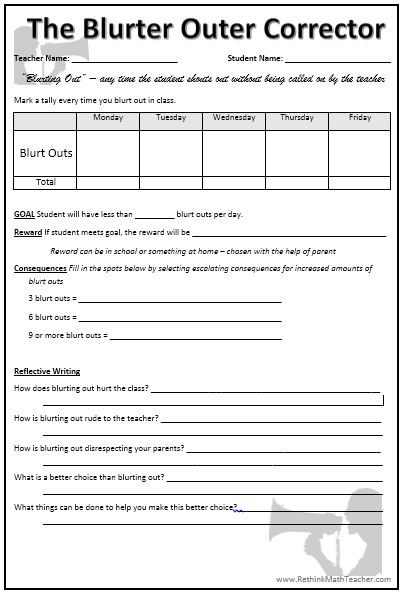
Click the image view the worksheet for the student who keeps blurting out in class
5) Meeting at the Door
For teachers who do not have the same group of students all day, and have had one student who has been exceptionally chatty or disruptive lately, I like to meet that student at the door and ask her to wait in the hallway until the entire class has entered. Then I look her in the eye and have a brief heart-to-heart.
I explain that she has been blurting out a lot, and it’s very frustrating to me as the teacher, and its affecting how well the other students are doing.
I let her know that she’s a leader, and I need her help.
I remind her that she may not shout anything out in class, and if she has a question, he needs to raise her hand. Then I ask her to quickly go to his seat, and begin his work
6) The Other Meeting at the Door
If a student is being a constant disruption, I will ask her to step into the hallway, so that she and I can have a conversation. I let her stay out there for a minute or so. Usually, I have one foot out the door and one foot in the door so that I can see both her and the class.
Then I will ask the student “what’s up?”
I’ll remind her that I’ve asked her many times to stop talking, or shouting out, but she keeps doing it. “Why?” (they usually can’t answer why). Then I’ll say, “Well, can you please stop?”
Normally, I remind them that I care about them, and want good for them, but their behavior is unacceptable. Sometimes I ask them to articulate why their behavior is detrimental to the class, or how they can make better choices, etc.
But I don’t want the meeting to last too long.
I will then invite the student back into the room, under the condition that she agrees to work on her behavior.
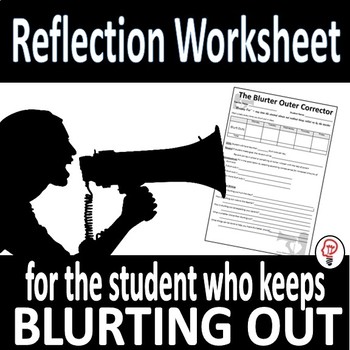
7) Tally Marks
I will often put a sticky note on a student’s desk, and ask the student to keep track of her own ‘blurt outs.’ Then, in class, when she blurts something out, I will ask her to make a tally on her paper.
Sometimes, the simple act of keeping a tally, so that she can see how often it is occurring, is enough.
But, of course, other times, more action is needed. In those instances I often set a goal with the student (like less than 3 blurt outs this hour), with a consequence implemented for exceeding that goal.
The worksheet at the bottom of this post has a section for students to record their blurt outs for each day.
8) The Stick
If a student is not responding well to redirection, I will let him know that if he gets to “x” number of blurt outs, there will be a consequence. (Note, I don’t say “there will be a consequence.” I say what the consequence is, like silent lunch, a phone call home, or a reflective writing assignment.)
It is often hard to give a consequence, but here’s a list of a few to get the thought process rolling.
- A timeout
- Clean the desks
- Lunch detention
- Sentence writing
- Reflective writing
- Phone call home
- Loss of class privileges (if you have class privileges
- Sweep the floors
As with all things, not everything on this list will work for you, your student, or your situation. The key is to find some deterrent that the student wants to avoid, and use that as the motivation for him to stay below the agreed upon number of blurt outs in your class for each day.

Click here to learn more
9) The Carrot
I am not a big fan of giving a student a reward for ‘not being bad.’ The main reason is, you’re not rewarding all your students who are behaving, but because Billy can’t stop shouting out, he now gets special privileges. This sends the wrong message to the rest of the class. So you’re telling me that I can have that same privilege if I just start shouting out a lot?
That in mind, there is something to be said for positive interventions. And let’s be honest, sometimes, desperate times call for desperate measures.
So if you want to establish some reward for a student not shouting out, here’s some ideas.
- Partner with the parent so that the reward is something that they receive at home
- Make it a class reward to create some positive peer pressure
a. Like ending the class two minutes early
b. Extra Credit
c. A marble in the jar, that when its full the class earns some type of prize or privilege - Give the student some extra attention. Like allow them to tell a joke or story to the class
- Positive phone call or a letter to take home
- Let them choose their assigned seat
I once allowed my class to earn the privilege of watching Shark Tank. If you’ve never seen the show, its about entrepreneurship, where business owners compete to buy shares of a company. It’s very entertaining, and you get to see cool products, but there’s lots of math involved in it. So we would pause the show frequently, and do the math problems that were being presented in the show.
My students thought they were being rewarded, yet they were doing more math! And they only got this “privilege” if they behaved super well for an extended period of time!
10) Sentence Writing
I pre-made worksheets with a long sentence printed out on it (or I would hand write it if I ran out). When a student continued to disrupt the class, I simply handed them the paper and told them to write the sentence ten times.
The sentence was about how disruptive behavior effects the student, his classmates, and dishonors the teacher and the school.
My Language Arts friends are always upset when I use or suggest this strategy, because they don’t think that writing should be a punishment.
However, when students are physically reading the paper, and writing down what they read, it’s very hard for them to continue talking.
A SIDE NOTE: The act of putting this paper on their desk can be your warning. Then the next time they speak out, you can just tell them to write the sentence once or twice. Of course, you can increase the number of times they have to write it as the problem continues.
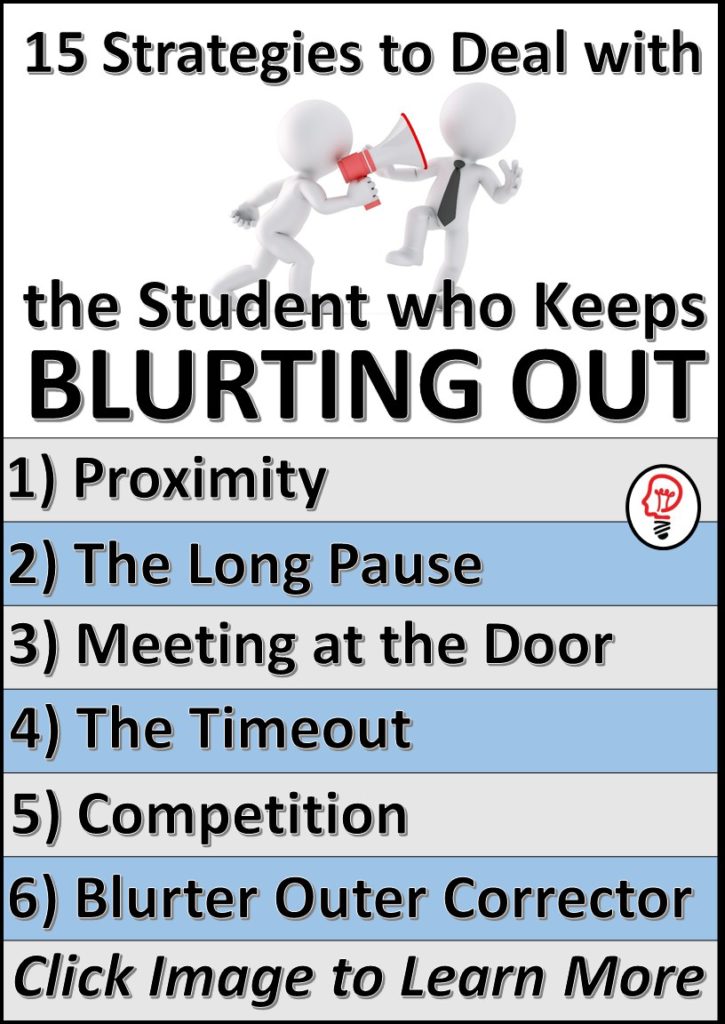
11) Desk Change
Simply moving a student from one seat to another can often curtail the behavior.
And if not, it goes a long way when you’re having a conversation with the parent and you’re saying, “I asked him to stop talking, he didn’t. I moved his seat, he still kept talking…”
12) The Contract
This is a hybrid of many of the above strategies.
But for your constant offender, come to an agreement with them. If they blurt out x number of times, there will be punishment A. Y number of times will earn them punishment B. Etc.
You can also implement a reward into this system.
The key is to go over it with the student, let them help come up with the consequences (and rewards if you are doing them) and put it to pen and paper.
I would encourage you to go a step further and include the parents.
Again, the worksheet at the end of this post, titled “The Blurter Outer Corrector” is exactly this.
13) The Timeout
I don’t like sending students to another room. I feel like I’m dumping my problems on my colleagues.
But sometimes, that’s what I do.
That said. When I do send a student to another teacher, I always have pre-arranged it with that teacher. I give the student the reflective writing paper, and it is only for a set period of time (like ten minutes).
When the student returns, I have that quick meeting at the door, and then I welcome them back. Forgive and forget.
14) Make it a Competition
Divide the class into groups and put a frowny face and a happy face on the board. Give each group a name or letter, and then give tallies under the frowny face for that group every time someone blurts out. Make sure to give lots of happy face tallies for desired behavior – like working together, everyone having a pencil, turning to page 305 without talking to a neighbor, etc.
You can also pit one class against another if you have more than one class.
Of course, this competition works best when there are rewards involved. The rewards should be small things and should be earned at the end of the day (their young people, long term goals don’t work well for them).
My rewards often look something like this:
- 5 points = 5 points extra credit
- 10 points = 2 minutes of free time
- 15 points = no homework pass
- 20 points = a high five
You may think I’m joking about that last one, but for some reason, my middle school students always want to give me a high five. I always decline, normally jumping out of the way and telling them that they’re not allowed to hit the teacher. But then I make a big deal out of it when I tell them that they can get one for 20 points. They normally see the humor in it all and play along.
15) The Blurter Outer Corrector
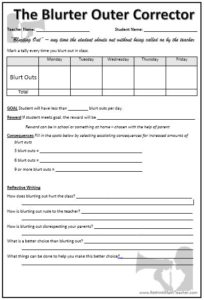
I have a worksheet for you. It’s for that student who is constantly blurting out.
The top has a section for him to keep tallies for every time he blurts out for each day of the week. Next it has a place for you to establish a goal (say less than 3 blurt outs a day) and a reward (if you choose to go that route).
It also has a consequence section if the student exceeds the 3 blurt out threshold, another for 6 blurt outs, and a third for 9 blurt outs in one day. Of course, it’s editable, so you can select different numbers.
Finally, it has a section for reflective writing on how blurting out hurts the student, class, teacher, etc. And on the back, it has a sentence for the student to copy, with lots of lines for him to copy it upon (you know, in case he needs to copy it more than once).
Click here to preview the reflection worksheet for the student who keeps blurting out.

3 Bonuses:
Looking for More Resources to Help with Your Classroom Management?
I have 3 great resources that you will help you improve your classroom management. Click here to see them.
